With the vaquita marina porpoise dying out as bycatch in illegal fishing gillnets in the Upper Gulf of California, Vanda Felbab-Brown and Alejandro Castillo López outline key actions Mexico’s government can take to restore seafood trade with the United States and save the vaquita in the process. This piece was originally published by Mexico Today.
The vaquita marina, the world’s smallest porpoise, is in crisis. It is dying out as bycatch in illegal fishing gillnets used to trap primarily the protected totoaba fish, whose swim bladder is trafficked to China, but also other finfish and shrimp. Without an urgent course correction by the government of Mexico, the vaquita may go extinct in 2021. The vaquita population dropped 98.6% in eight years, the fastest and steepest decline of any vertebrate species in the past 50 years. The last count, in the fall of 2019, found only ten vaquitas, a critically low number. But it also found three calves, giving a measure of hope that the still-breeding porpoises could yet survive. Trained observers last sighted the porpoise in November 2020. Since then there has been so much illegal fishing with gillnets that scientists cannot get a clear space to work.
The crisis in the Upper Gulf of California (UGC) is deep and multifaceted – not only environmental, but also economic and in the rule of law and governance. The crisis also has severe and spreading consequences for President Andrés Manuel López-Obrador’s poverty-alleviating agenda. The U.S. 2018 vaquita-linked embargo on UGC seafood has affected fisheries valued at US$50 million per year, and the financial pain is expanding beyond the UGC. On April 30, 2021, the United States banned the import of all wild-caught Mexican shrimp, an export that brings Mexico $262 million per year. In a blow to the Mexican fishing industry, this latest U.S. ban will affect 42,000 jobs in Mexico directly and another 400,000 indirectly. This ban was triggered by the failure of large shrimp trawlers to use devices to prevent sea turtle bycatch. However, the United States also prohibited the importation of Mexican shrimp caught by smaller boats (pangas), to prevent evasion of U.S. rules about the origin of the imported shrimp, as UGC pangas are suspected to have done since their 2018 embargo.
Unless the UGC dynamics change rapidly, more penalties linked to totoaba poaching, other illegal fisheries, and vaquita bycatch are in the offing. If the United States finds Mexican fishers non-compliant with the international Driftnet Moratorium Protection Act, a biennial ruling due in June 2021, Mexican fishing vessels can be denied U.S. port privileges and additional seafood embargoes levied. Furthermore, under the U.S. 1978 Pelly amendment to the Fishermen’s Protective Act, all trade in wildlife products from Mexico, including fish, could be suspended. The U.S. Fish and Wildlife Service was sued in June 2020 by environmental NGOs to begin the process of evaluating compliance with the Pelly amendment in regard to the vaquita. The United States-Mexico-Canada Agreement will soon receive a public complaint about Mexico’s failure to enforce environmental laws to protect the vaquita (similar to a recent complaint about sea turtle bycatch). If found valid, as is probable, the United States can impose further sanctions (after exhausting dispute resolution mechanisms). The September 2021 Standing Committee meeting of the Convention on International Trade in Endangered Species of Wild Fauna and Flora (CITES) will also consider Mexico’s compliance with CITES recommendations to protect the vaquita, with wildlife trade sanctions again a potential outcome. Cumulatively, these penalties can have a dramatic national-level impact on Mexico’s struggling economy.
The necessary actions to get the U.S. embargos lifted and to prevent further sanctions are the same actions which will save the vaquita. The Mexican government must take action to eliminate vaquita bycatch. To do this, Mexico’s newly appointed Fisheries Commissioner Octavio Almada Palafox must: (1) convince the Mexican Navy (SEMAR) that stopping illegal fishing and restoring the rule of law in the UGC is an urgent imperative, (2) motivate the immediate reactivation of the multi-institutional gillnet removal program in the UGC, and (3) provide the adequate incentives and tools to UGC fishers to rapidly transition to vaquita-friendly fishing gear. If successful, Mexico would be on the path to recuperate its most important seafood market and restore critical economic revenues.
To get out of the UGC embargo crisis requires understanding the process which brought it about. In August 2018, a U.S. court ruling imposed the first seafood restrictions on UGC seafood. The ban was the verdict of a December 2017 lawsuit brought by three NGOs arguing that the U.S. Marine Mammal Protection Act (MMPA) made it illegal to import UGC seafood caught in gillnets because they endanger the vaquita. The MMPA bans seafood import from countries whose fishery bycatch of marine mammals exceeds U.S. standards. Because the vaquita’s tiny population is so threatened, the standard must be the tightest: to be compliant with the U.S. law, UGC fishermen must use gear that poses zero risk of vaquita bycatch.
In November 2018 the government of Mexico tried to fix the problem by applying for MMPA “comparability findings” for ten UGC fisheries to prove Mexico’s regulatory program is “comparable” in effectiveness to the MMPA. Despite a long list of conditions to be met, in December 2018 the U.S. government largely approved on the basis that Mexico’s would revise its regulatory regime to ban all gillnets and their possession, authorize new “vaquita-safe” fishing gear, and strengthen enforcement and its transparency. Based on the promise of the Enrique Peña Nieto administration to do this, the United States awarded comparability findings to nine of the fisheries, allowing their imports. However, even these fisheries were still subject to the ongoing legal process and preliminary court injunction from the NGO lawsuit, so most UGC seafood still could not legally enter the US.
Things got worse instead of better. The López Obrador administration did not follow through on the promises, despite multiple warnings from the United States in 2019 that a failure to do so would cause revocation of the comparability findings. That happened on April 1 2020, and the NGOs subsequently dismissed their case. So now restoring the UGC seafood trade to the United States strictly depends on whether the United States finds that the Mexican government has enacted and implemented the promised regulations to protect the vaquita.
New regulations enacted by Mexico on September 24, 2020 and January 15 and 21, 2021 appear tailor-made to satisfy the U.S. requirements. That intent may not have been well communicated to UGC fishermen, who challenged the new rules in Mexican courts, defended the use of their “traditional” gillnets (outlawed in most of the UGC for years), rejected vaquita-safe gear as “unprofitable,” and largely failed to comply. As a result, the López Obrador administration cannot demonstrate that the new regulations have brought meaningful reductions to the vaquita bycatch risk. Yet without the fishers’ voluntary compliance with rules meant to protect their economic interests, diligent enforcement of the gillnet ban is necessary to restore entry to the U.S. seafood market for the Upper Gulf communities. Alas, for years, that enforcement has been ineffective.
The new regulations elevated stopping totoaba poaching and trafficking to a high priority for the Mexican government. But enforcement has remained pathetically inadequate during the 2021 totoaba poaching season.
The Mexican Navy has primary responsibility for enforcement in the waters of the Vaquita Refuge, and the power to arrest people caught in the act of committing a crime. A successful November 2020 interdiction operation will bring Mexico’s first charges under its 2017 Organized Crime Law against alleged leaders of totoaba trafficking. The Mexican Congress recently toughened penalties. But even so the 2021 season was one of the worst. In April 2021, totoaba poachers were even filmed operating in plain sight out of an illegal embarkation point on the main beach of the town San Felipe but have not been arrested. They flagrantly fish at night with lights.
Despite the urgency of removing the largest threat to vaquitas – the gillnets – such efforts virtually ceased in 2021. On December 31, 2020, one panga in a fishers’ flotilla harassing a Sea Shepherd Conservation Society (SSCS) ship removing an illegal net collided with the ship, resulting in one death and another serious injury. A destructive riot in the San Felipe port followed, and the government of Mexico requested SSCS to remain away from the area, and has not yet allowed their return. Museo de la Ballena (a Mexican NGO that has strongly supported gillnet removal and alternative gear trials) ran out of funds. This year, SEMAR has removed a few nets. But the important inter-institutional net removal program, in which NGOs and local fishers also participate and which provides critical support to SEMAR, has not restarted. The 2021 sharp reduction in gillnet removal will likely negatively impact U.S. decisions on Mexican seafood imports.
The Mexican government has established a governance and dialogue structure, the Intergovernmental Group on Sustainability in the Upper Gulf of California (GIS), with stakeholders including fishers and environmentalists. The GIS can help inform fishers that voluntary compliance is in their economic self-interest, as well as to the benefit of Mexico. But UGC authorities also need the resources and the political backing to mount effective actions, including ending a mob-rule atmosphere in the UGC. The GIS has pledged to devise a plan to do so.
To restore seafood trade with the United States and save the vaquita in the process, the Mexican government should adopt these recommendations as soon as possible:
- Stop illegal fishing in the Zero Tolerance Area and Vaquita Refuge. SEMAR must prioritize enforcement in the small, well-delineated areas of the Zero Tolerance Area and the Vaquita Refuge. Over time, rule of law in the entire UGC needs to be strengthened.
- Consistently remove all illegal gillnets. Reactivating the inter-institutional net removal project will reduce the immediate threat to the vaquita and satisfy a key international demand of Mexico.
- Resume the panga monitoring system. Mexican regulations require the monitoring of fishing vessels and analysis of the vessel movement data. Until 2020, this was accomplished through a contract with Pelagic Data Systems, but has lapsed since. Reinstating the system is possible, and the generated data will be a key tool to strengthen rule of law in the UGC and restore seafood exports to the United States.
- Apply for comparability at a per fishery basis. To reduce U.S. sanctions, the Mexican government should apply for U.S. certification of each fishery separately and do each right. Promotion of the use of the vaquita-safe suripera net for shrimp is key. Museo de la Ballena pilot programs show this net can make commercially viable catches.
- Ask for U.S. assistance in implementing vaquita-safe gear. MMPA implementation rules allow the U.S. National Oceanic and Atmospheric Administration to provide financial and technical assistance for the development and implementation of gear requirements. Mexico should apply for such assistance to finance the suripera delivery and the implementation of other bycatch mitigation measures so that the nine Mexican fisheries currently embargoed by the United States can again have access to the large U.S. market.
- Implement a traceability program for the suripera nets. Because of concerns about fraud, Mexico will have to ensure that permits issued for fishing with suripera nets will not be used to launder gillnetted shrimp. Traceability trials of Museo de la Ballena are promising and should be scaled up.
- Implement a new gillnet surrender program, but this time, avoid prior fraud. Devising and implementing an effective gear swap program before commercial fishing in the UGC starts in September is essential.
- Intensify law enforcement efforts against totoaba trafficking, building on totoabero arrests in November 2020. Since elements of organized crime groups operate in both totoaba trafficking and the illegal drug trade, it makes good sense for Mexico to partner up with the United States.
Complying with environmental and fishery laws to prevent the bycatch of endangered species and acting against illegal fishing is not just a “vaquita-hugging” agenda of environmentalists. It is essential for restoring Mexico’s most important trade relationship. Regaining control of the activities at sea must be a priority for the Mexican government to reduce poverty and social instability in the UGC communities and beyond. Without rule of law at sea and onshore in the fishing communities, Mexico likely faces additional extensive economic sanctions. Conversely, good governance will lead to healthy international relationships, safe working conditions and sustainable profits for fishers and tourism providers, and productive fisheries.
The Brookings Institution is committed to quality, independence, and impact.
We are supported by a diverse array of funders. In line with our values and policies, each Brookings publication represents the sole views of its author(s).
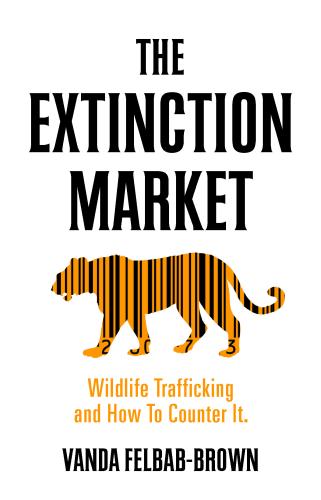
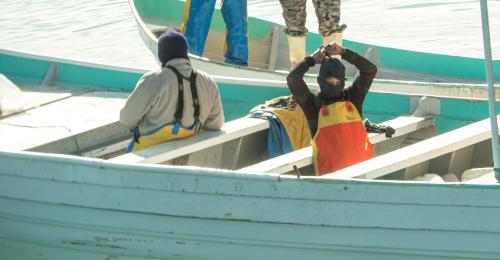
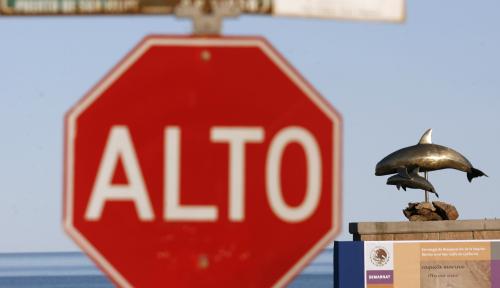

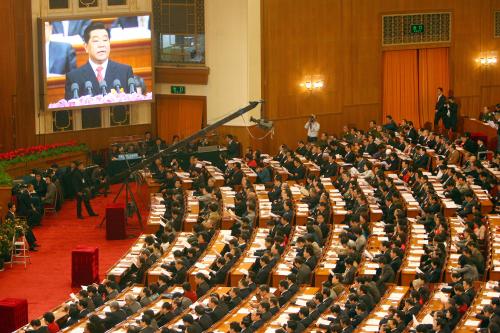
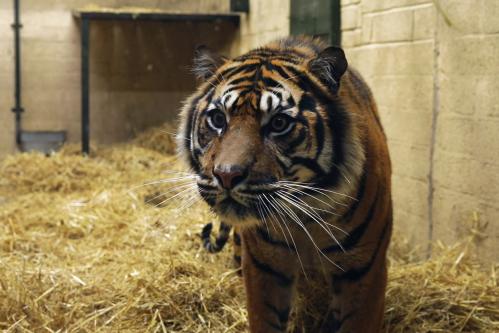

Commentary
Restore US-Mexico seafood trade and save the vaquita
May 7, 2021